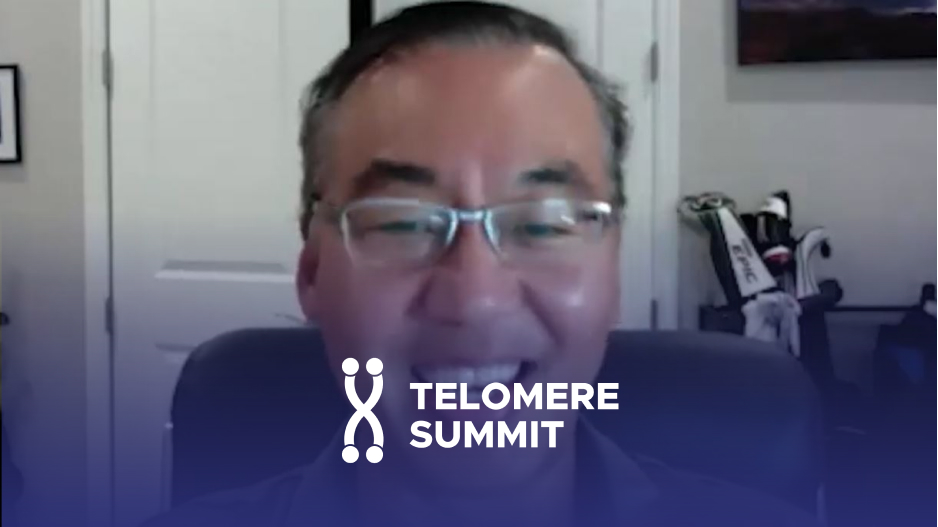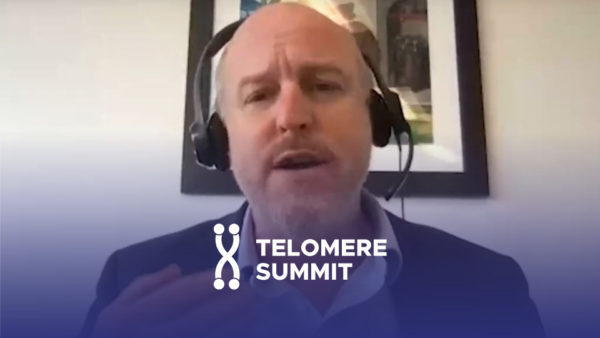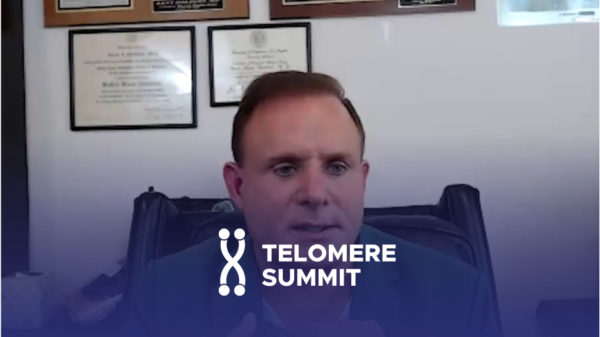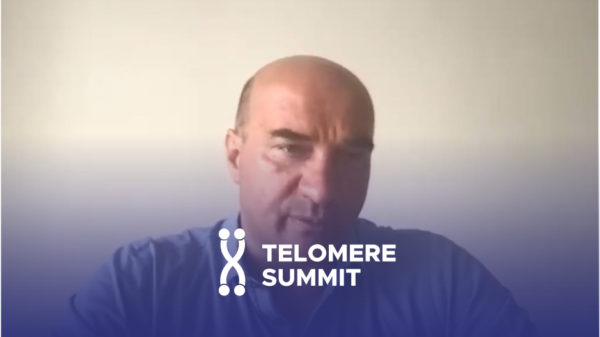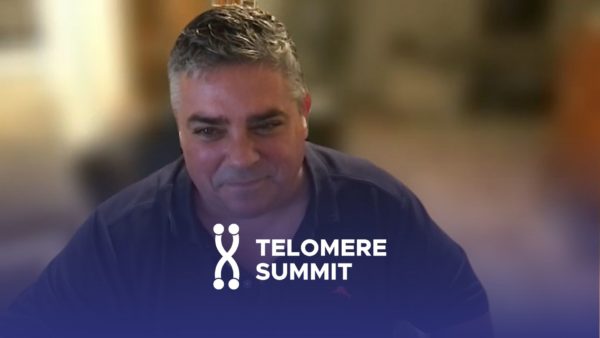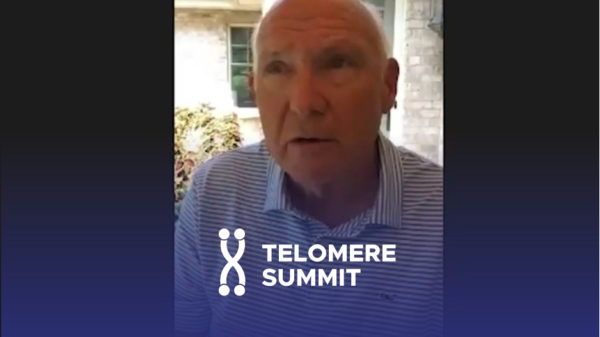Join the discussion below

Dr. Raffaele received his B.A. in philosophy from Princeton University and his M.D. from Drexel University Medical School in 1989. He trained at The New York Hospital/Cornell University Medical Center and was formerly a clinical assistant professor of medicine at Dartmouth Medical School. Dr. Raffaele is board certified in internal... Read More
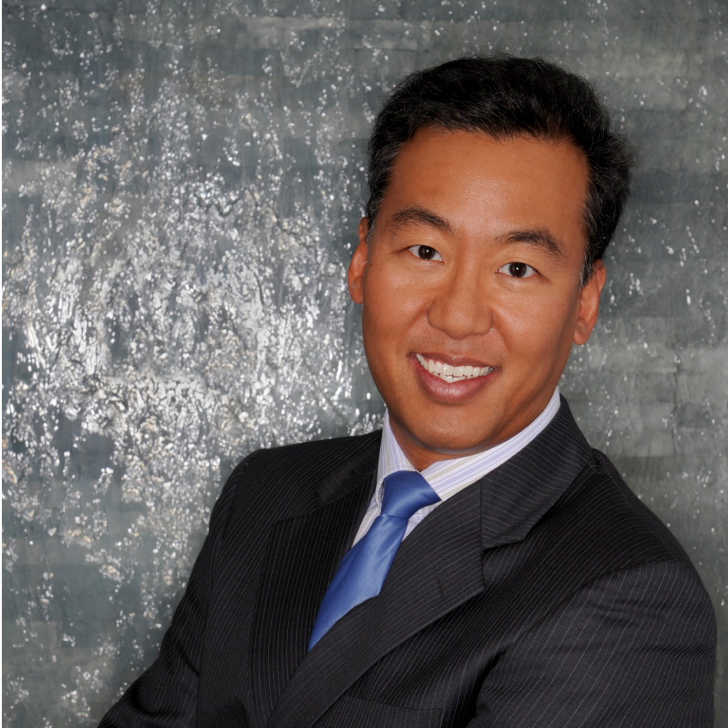
Dr. Lee is a best selling author, international spokesperson and a board certified Endocrinologist. In 2008 he is the founder of the Institute for Hormonal Balance in Orlando and practices functional endocrinology. He is the co founder of Clinical Peptide Society and teaches many healthcare providers in using peptides. He... Read More
- Supplements that show senolytic activity in animals and humans.
- Preliminary results of a pilot trial of dasatinib/quercetin on DNA methylation patterns.
- Epitalon for aging and telomere attrition.
Joseph M. Raffaele, M.D.
Welcome again to the Telomere Summit. This is Dr. Joseph Raffaele, your host. Today, I’m very happy to have Edwin Lee, M.D. on the program to talk about all the great work he’s been doing in his practice over the years, but in particular, a very interesting study that he’s just finished, hasn’t had all the data analysis, but we’re going to get some interim results, on the effect of senolytic combination on patients in a clinical trial. Dr. Lee is a best-selling author, international spokesperson and board-certified endocrinologist. In 2008, he founded the Institute for Hormonal Balance in Orlando, Florida, and practices functional endocrinology.
He is a co-founder of the Clinical Peptides Society and teaches many health care providers in the use of peptides. He also formed savepeptides.org, a not-for-profit organization to save peptides from the FDA. His latest book is the ‘Fountain of Youth With Peptides, Discover The Regenerative Powers of Peptides’. In addition, he is finishing up a six-month senolytic study in 21 patients, as I mentioned, using Dasatinib and Quercetin, should also say that Ed is an avid triathlete and golfer and practicing what he preaches from an age management standpoint. Great to have you on the show, Ed.
Edwin Lee, M.D.
Thank you, Jo.
Joseph M. Raffaele, M.D.
I just like to start by getting, letting the listeners get to know a little about your journey, cause this is a mostly a healthcare, practitioner, doctor audience. You’re very successful in your field and sort of, how did you get from endocrinology into age management and now into the, obviously, the peptides, but also into the senolytics?
Edwin Lee, M.D.
Sure. So I got tired doing conventional endocrine when I was in Winterhaven, Florida. So I was the first endocrinologist in central Florida, a small little town, and I got very, very busy within the first two, three months. And after a while, I’m just getting tired of just doing band-aid medicine. And I kind of knew that there was another type of practice out there. And I was just really curious. So, actually, I had met you Jo, probably about 14 years ago at Red Rock at the AMMG meeting.
Joseph M. Raffaele, M.D.
I do remember that.
Edwin Lee, M.D.
I remember talking in the elevator and I was so impressed. Like, wow, you do functional medicine in New York city. I was like, wow. I mean, it’s like, I think, I think you gave a talk and I really got excited about the whole meeting. I saw the light at the end of the tunnel, like, wow, there’s something better than conventional endocrine. So there’s a nutritional medicine, functional medicine, so I took a lot of courses and I started incorporating what I learned into my practice. And then I decided I’m going to start in 2008. And I started the worst time ever. That was the peak of the recession, if you remember.
Joseph M. Raffaele, M.D.
Yes, it was.
Edwin Lee, M.D.
I already signed the contract, 10 year contract and everything after that, just like, if you want to win money, just do opposite what I do in Vegas, if I go red, go black. So in 2008, the whole economy is crashing and I know nothing about how to start my own practice. And anyway, I just, I remember asking my wife like a week before I started, do you think I’ll make it not knowing anyone here, moving to Orlando, not going to the hospital, no insurance, dropping out of Medicare. And I remember, I asked her particularly that question, she denies it, but she said, I don’t think you’ll make it.
Joseph M. Raffaele, M.D.
Yeah, I tell that, I had a similar experience when I did it. I hate to say it 10 years earlier in 1998. And it was sort of one of those fields of dreams things, you know, build it and it will come and they just don’t come quite as fast, but they do come eventually.
Edwin Lee, M.D.
Yes they do. Yeah, it is word of mouth. So I kept telling my patients, I just told my wife, I just need one patient. Unfortunately, some of my patients from Winterhaven, which is about an hour South of Orlando, they came, so that kind of helped out. And then the practice grew, word of mouth and, and you know, now I’m being interviewed by you and this is an amazing journey. Not quite sure how exactly how I got into peptides, but I think I went to a conference and heard one person speak about it, so I did a lot of research and got on to the peptide wagon. And eventually wrote a book and formed an organization, it’s truly, it’s been exciting. I’m just a little upset with the FDA trying to take everything away. But anyway, we’re fighting to save some peptides.
Joseph M. Raffaele, M.D.
You definitely are fighting the good fight and the FDA, you know, has, has certainly been been, you know, trying to regulate things a little bit more tightly, but now you’ve, you’ve moved along into also doing this. So obviously the Genesis of this, this senolytic clinical trial in your, in your office, I mean, it’s an exciting field. There’s a whole bunch of things out there. There’s the hallmark of aging talking about cell senescence, telomere attrition, an area I’m very interested in, but you know, as a busy clinician to, to do a trial with, with these medications, it’s, it’s pretty excitable, one’s a supplement, the other is a medication, but tell us a little about the thought process and the experiences that got you to there.
Edwin Lee, M.D.
Yeah, so I read Dr. David Sinclair’s book on basically longevity and I really got hooked. I actually read the book twice and it’s interesting. I got more hooked on, he was talking about senolytics, so I did a lot of research on that and I, and it’s interesting. There were some people that just basically followed his protocols and has done basically like, a biological age test looking at epigenetics. But I was, I wasn’t really interested in that. I was really interested in the whole idea of senescence, as we age, there’s a tipping point where we accumulate too many of these ‘zombie cells’ with senescence cells. And then from there it just falls apart.
And I was thinking, you know, why don’t we do, you know, a small trial to see if this could work. So I reached out to Ryan and we, Ryan Smith from TruDiagnostic. And he basically does biological age. I said, let’s see if we can get our biological age younger. We’ll do about 20, 21 patients in the trial. And we’ll also, marker will measure some markers for senescence. And we’ll also look at our immune cells and we’ll do some other, you know, blood tests to see where we’re at. And so the test actually, all these tests was like evolving because we weren’t quite sure, there’s no perfect marker for senescence. It’s, it’s a growing field,
Joseph M. Raffaele, M.D.
That’s true.
Edwin Lee, M.D.
and every month, there’s another marker. And if you look at basically, you know, every part of senescence changes and they release different cytokines and markers.
Joseph M. Raffaele, M.D.
So let’s actually step back for a second, just for maybe the potentially more naive, not naive, less experienced listeners. What defines a senescent cell?
Edwin Lee, M.D.
Senescent cells is very simple. It’s the definition where the cell stops replicating. It just comes to a point like, end of the line. And at that point, it’s supposed to go to atophagy. Our immune system gets rid of it, but it refuses to die. It’s one like, bad apple that says I’m not going to go. And it turns on all these mechanisms to basically to prevent from dying. So we have three types of senescent cells. Number one is embryonic for organ formation. And we’re beyond that now. Number two is acute senescence, which we need for wound healing. And number three is chronic senescence.
So if you have too much senescence, what happens is it, it starts causing this release of toxic material and it can affect your normal cells. And they can actually go to, basically, you have telomere shortening. You can actually cause tumor cells and you can basically speed up the aging process that way. So if you have too much senescent cells, I call zombie cells to my patient in the brain that can lead to Alzheimer’s, Parkinson’s, neuro-degenerative diseases. It goes to your lungs, you can have, basically, pulmonary fibrosis, or you can have- You can have many different types of conditions in the heart, you can have heart failure or heart disease, it can cause cancer. So everything really, Dr. David Sinclaire from Harvard, he really put it beautifully that we should think of aging as the mother of all diseases.
Joseph M. Raffaele, M.D.
Yes.
Edwin Lee, M.D.
Which is a paradigm shift because we think that aging is inevitable. But if you understand why we aged and address that, we can actually make a big difference. And there’s three clinical trials that I know of in humans that basically looked at Dasatinib and Quercetin. And so I figured, you know, let’s see if I can duplicate this a little bigger trial, six months study, and I’m really excited about it. So if, if you want, I can tell you about.
Joseph M. Raffaele, M.D.
Yeah, no. That’s the general hypothesis, which is if you target senescent cells or a fundamental aging process, then you can get improvements in multiple age-related diseases rather than targeting an actual single pathway. I think they liken it to sort of going after the infectious disease, rather than trying to cure the organ, that’s diseased. And, and, and that’s what the Tame trial is trying to do with Metformin. And, you know, we’re looking at deaths by, you know, sort of decreasing or up-regulating AMPK. And in this case with senolytics, you know, we want to get rid of them, these cells that cause the, all the nasty inflammatory markers like IL6 and TNF-alpha, and IL1-alpha et cetera. So those, you know, there’s a pluses and minuses to those drugs I mean, Dasatinib is used for CML, it’s an anti-apoptotic inhibitor. It tries to get rid of those, those pathways. So I take it, you had, how did you choose the subjects and what was, what was the primary endpoint? So the protocol, of course.
Edwin Lee, M.D.
So my protocol was that we first had it, we went through IRB to get approved, to make sure that this is safe. And so we had an IRB approved. Patients, basically, I sent an email out saying, ‘Hey, if you’re interested contact, contact me, if you’re willing to enroll in this study’. There was a fee for the study because a lot of the labs, I couldn’t pay for all the labs out of my own pockets. So most of my patients paid about $1,500 just to be in the study. And so I have some people that want to be able to study, but they were recently diagnosed with cancer, so we excluded them. And anyone, with basically like, I don’t have many people with congestive heart failure or chronic, really bad medical conditions, but generally people with active heart disease, recent stroke, or people with active cancer, unfortunately can’t be in the study. So we’re looking for people generally over 60 years old. And my oldest one was 87.
And so we collected 21 patients in the study and we checked their baseline chemistry profiles, CBC. We also looked at CRP, IGF-1, and we did a, basically, a lymphocyte panel, looking at CD4, CD8 and other parts of the immune system, which was also an expensive part of the test. We also looked at your epigenetics and we were looking at senescence. So we, we were gonna do basically the beta galactosidase test but, beta-gal. But we decided at the last minute to switch to Activin-A, and also we were going to look at a prostaglandin level, but apparently that company has never done this test. So it was like- But we did the Activin-A, which has been shown that if you have senescence, it’s elevated. And so there was no reported studies that shows that if you reduce senescence, you lower Activin-A. So it’s one of the cytokines that’s released with senescence. And what I was saying before, there was no universal marker for senescence, you know. You have IL-6 and you have all these other cytokines, but it’s one of those things that senescence is very complicated and every cells does it a little differently. There is no universal pathway for senescence.
Joseph M. Raffaele, M.D.
There’s p16Ink4a, but, that’s, you know, that’s a little tough to do, it’s a sort of a biopsy thing to do, and that’s not universally agreed upon either, you know, this, the S-beta gal assays, there are a couple of them available commercially, or at least one that I know of. And there’s some question about whether or not those are, but in the papers that you mentioned, you know, the Justice paper and the Hickson paper, where they did the D plus Q protocols, they did measure those things. And so I guess there are assays for that, but you were looking to see if there was an overall change in, and also you had safety markers, and then you were also looking at, I guess, for an overall change in gene expression, which would be picked up by the DNA methylation, which clocks were you looking at with the-
Edwin Lee, M.D.
We looked at all the clocks. So TruDiagnostics looks at the Horvath, the Grun, basically the Neden, the Neden Pro that’s from New Zealand. So there’s a clock from Yale. So they, they looked at all the clocks. So we can tell you that three people dropped out of the study, but they all did the blood tests. They did a baseline three months and six months. The one person that dropped out, he basically at, after his three-month blood test, he drove from Miami to Orlando to do this study. He was really into doing this study, but he says, ‘look, I just got diagnosed with prostate cancer’. And I didn’t know his PSA was like in the 100s. And he goes, ‘I’m getting worked up’. And he goes, ‘can I be in the study?’ I go, ‘unfortunately, that’s part of the exclusion, you have to be out, but can you come back in six months? I’m just curious’. And he goes, ‘yeah, for science, I’ll do that’. And then I had two patients that basically had more of an anxiety issue. They didn’t want to be on Dasatanib. They kind of got worried about it. One had a little bit of headache, but nothing serious, but they wanted out.
I was like, okay, but can you come back in six months to do your blood test? And we just want to see. So we have three people that dropped out. So we have we’re down to, from 21 to 18 patients. And in general, everyone improved in terms of reducing the Activin-A levels more at six months than after three months. And we used a lower dose than most people because in their study there, a lot of people use Dasatinib, a 100 milligrams and Quercetin, a 1000. I used Dasatinib, 50 milligrams with Quercetin, 500 milligrams, So that was all provided for them. And the reason I chose 50 milligrams is that if you’re on a P450 inhibitor, you can have side effects. So I don’t know, who’s on Verapamil, who’s on Arithromycin, who’s going to get a Z-Pak. So I said, let’s just be safe. Give 50 milligrams, just go, let’s go a little low. And you don’t need much of, basically, senolytics to get rid of senescence. So if you just have to get a low dose and it can do well. So that’s why we chose 50 milligrams of Dasatinib and Quercetin, 500. And at six months, what’s interesting is, besides reducing senescence, we had improvement in the biological age.
Joseph M. Raffaele, M.D.
How did you show that you reduced senescence?
Edwin Lee, M.D.
Reduced Activin-A.
Joseph M. Raffaele, M.D.
But did you also, I was thinking of the immune subsets, in that, did you look at any like CD28 negatives? Or did you use the ones that-
Edwin Lee, M.D.
We didn’t use CD28, we just did CD4, CD8 and couple other things, but I don’t think CD28, was in that lymphocyte panel. But all that data is going to this bio statistician. I think he’s basically at Yale, he is going to look at it. So I don’t know what the outcome is. It’s a lot of data to look at.
Joseph M. Raffaele, M.D.
Okay. So just you’re, you’ve been living it. So just to mention, you were doing three days of-
Edwin Lee, M.D.
Per month.
Joseph M. Raffaele, M.D.
per month for six months.
Edwin Lee, M.D.
So yeah, so some of my patients, even my staff initially got confused, ’cause they thought like three Mondays in a month. I go, no, no, no, like, January 1st, January 2nd, January 3rd, January 1st, 2nd, 3rd So three days in a row, but somehow they interpret like three Mondays in a row, no, no, no, three days in a row.
Joseph M. Raffaele, M.D.
Yeah. These are the headaches that you run into. That’s very interesting.
Edwin Lee, M.D.
It was very well tolerated. There were few people with mild headaches and we would say just take it at nighttime and generally, some people say, you know what? Didn’t get a headache till day three or the headache was really mild. I actually took it, my wife took it. We had no complications or side effects of headaches or any GI issue, but we just had two people that didn’t like idea that they were on a tyrosine kinase inhibitor, Dasatinib. And I, I really enforced it. You have to take both together. You can’t just like, take this and then take Quercetin, a week later, you have to take in combination.
Joseph M. Raffaele, M.D.
Yeah. Can you explain why that is, because the way that, which they both-
Edwin Lee, M.D.
Well, the whole pathway of basically getting rid of senescence and then they have this resistance to die and they basically have this, they have these proteins that they’re releasing and all these chemicals to prevent basically apoptosis. So if you can get a tyrosine-kinase inhibitor in there, and then basically Quercetin also in combination, does the BRA, I think-
Joseph M. Raffaele, M.D.
BCL2.
Edwin Lee, M.D.
BCL2 pathway reduce basically the hypoxic tube pathway. So there’s all these different pathways in combination which is beautiful because all the senolytics looked at one single pathway, it never really works. You got to do a whole combo of it for it to work. And that’s, you know, all these biotech companies are spending millions of, or even billions of dollars to see what the magic bullet is. They’re really going for like a one single pathway. And unfortunately they don’t see good results.
Joseph M. Raffaele, M.D.
Right. Yeah. I mean, James Kirkland’s group has talked about that where, you know, you want to, to not look for that single, that single bullet. And that’s why, you know, when you want to go after the cell, not the pathway. ‘Cause that’s what you’re really trying to get rid of. You know, in the, in the Justice study, looking at pulmonary fibrosis patients, they got, a lot of them felt better from a frailty standpoint, they’re better functionally. Did your patients notice anything in terms of, you know, how they felt energy-wise or, you know, I don’t know, what were they like in general? Are they overweight in general or what?
Edwin Lee, M.D.
No. Most of my patients were really relatively healthy. They’ve been with me for 10 plus years. Their hormones are balanced. They do a liver cleanse. They’re generally very healthy. They don’t over-abuse alcohol. None of them actually smokes. But two patients are really interesting. They have very low Activin-A levels, to begin with. So they didn’t actually, it didn’t change. I mean, they were like point, like my number initially was like 0.54 Activin-A and then it went down to 0.54, 0.52 at three months. So then 0.42 at six months. So the six months, we see a big drop in, basically reduction of senescence. Those people, the two people, two women, it’s hard to know who has a lot of senescence. You just assume that everyone after 60 has it. But I think people, 30 that, you know, are very sick. They come in to see you and they have multiple system disorders. It’s like, wow, you probably have tons of senescence but unfortunately there’s no good marker. And this is the marker, Activin-A is for research only. It’s not-
Joseph M. Raffaele, M.D.
It’d be interesting to see when you get your clock data back, whether people who are biologically younger by the various clocks, you know, either the intrinsic, the extrinsic clock or the GrimAge are also have lower Activin-A levels, whether they correlate well, I mean, it’s a small end so you might not see, see it there, what’s the typical range for the Activin? You said 0.54. I mean, how high up does it go? What was your highest Activin-A level?
Edwin Lee, M.D.
Just looking briefly, if I recall, like highest was like 0.7 or 0.8. Kind of like one to like, 0.1, to, like, I don’t think anyone hit one, but like, you know, 0.8 or something like that. So just right away, that’s kind of the range there, but yeah, that test was done in Texas we basically had baseline three months, six months. I had it personally, my son and I personally labeled each one and put it on dry ice, how to manifest, email everyone. And it was literally, they were all waiting by FedEx to get it and because I don’t have any backup, this is all I got this was at -80 degree. We had a store in a -80 degrees freezer.
Joseph M. Raffaele, M.D.
So is that the first clinical trial you’ve done? You did a, you did a CIMT trial as well, right, in the past, I think?
Edwin Lee, M.D.
Yeah, Neo40, showing that six months taking, basically a nitric oxide supplement called Neo 40 can reduce plaque, both sides. Actually in everyone by at least 10% or more after doing six months.
Joseph M. Raffaele, M.D.
Yeah. So you’ve been involved with, you know, adding to the medical literature.
Edwin Lee, M.D.
And I also did a recent study, came out first published, published study on the peptide BPC on knee pain. So I did inter or it was a retrospective study. It’s an inter-articular injection with BPC in multiple types of knee pain, published this year. If you Google, just, BPC intraarticular knee pain, you’ll see my paper. But if you go to PubMed and type my name, I can’t find it.
Joseph M. Raffaele, M.D.
Well, that’s interesting.
Edwin Lee, M.D.
It’s on PubMed, so I can’t figure out why you can’t find it in PubMed.
Joseph M. Raffaele, M.D.
So you had a significant beneficial effect on knee pain. You were, you were injecting the BPC in your patients?
Edwin Lee, M.D.
Yeah. So this is a peptide called Body Protection Compound 157. And I’m not quite sure how many of your people watching it actually know what this peptide is, but I think I call it the healing peptide. It’s truly amazing. It’s one of my top five peptides that I love. And I’ve seen people who’ve been told you need a total shoulder replacement and I’ve injected the peptides into their shoulder every month with also some guidance after five months where they could not even put deodorant underneath their arm because they have three, like a labral tear, supraspinatus tear, infraspinatus tear, not complete, but just a significant tear where they have no range of motion. Now they have full range of motion where they’re basically back to normal. So it’s truly amazing how these peptides can repair.
Well, this peptide can basically repair tendons, torn ligaments, helps with muscle and also nerve damage. So it’s truly amazing. I remember my son, he was in ninth grade and I was in college, but he injured himself doing cross country. He couldn’t even bend his knee, he couldn’t even walk. He had iliotibial band, really just sore. And I said, look, I can inject a peptide. And he was a ninth grade. He goes, you aren’t F-ing injecting me. So I had to give like a five minute PowerPoint presentation. And then he goes, okay, you can inject. So my kids are like, so tired of me talking about peptides. They just say, blah, blah, blah, Pepto-Bismol. ‘Cause I guess I talk about peptides every day.
Joseph M. Raffaele, M.D.
Right. Right. So.
Edwin Lee, M.D.
So in this study, we used, I used the, I used BPC intraarticular, the dose varied from two to four milligrams. I used to do basically PRP and then peptide saw improvement then I decided, you know what, I’m going to drop PRP, I just want to see if this works. And I was mixing TB4 and BPC. And then eventually I just said, forget TB4 just do BPC. And out of 16 patients, 14 out of 16 had significant improvement. It was a subjective retrospective study. And I had a medical student, a pre-med student who wanted to publish. And he was, I knew his father. He’s an orthopedic surgeon and this kid would not sit, he just wanted to publish, he wanted to post. And he waited in my office until we had a study going. So it was like, okay, call these people, and maybe we’ll gather some data and write a paper together.
Joseph M. Raffaele, M.D.
Great. That’s good. I mean, you know, there’s collected cell advanced clinical medicine by, you know, putting together these kinds of things. It’s fantastic that you carve out the time, which I know is not, not that easy to do.
Edwin Lee, M.D.
So let me mention, I have one patient that has been on TA65 he said in the beginning when T.A. Science started, I don’t know when T.A. Science started.
Joseph M. Raffaele, M.D.
2007.
Edwin Lee, M.D.
All right. Cause he had a telomere length of 5.7 he emailed me that, that was his lymphocyte, 5.7. And then he’s been on a TA65, big believer, he’s always been taking it. And what’s interesting is that, he has, I saw his biological age, he’s 87 years old now. Guess what his biological age is?
Joseph M. Raffaele, M.D.
Younger, I would imagine.
Edwin Lee, M.D.
Yes. Younger, but he’s 87. So would you say he’s 80 or-
Joseph M. Raffaele, M.D.
It depends. You know, which assay was used?
Edwin Lee, M.D.
Well, the, the biological age was with TruDiagnostics. So it’s an epigenetic test.
Joseph M. Raffaele, M.D.
Okay. Oh, I see. So you’re, he’s on TA65. His biological age is younger. I mean, wow. I mean.
Edwin Lee, M.D.
He also did the study, the Dasatinib and Quercetin
Joseph M. Raffaele, M.D.
Oh, he did? Okay. But you don’t have his, the clock back on him yet on that, after that.
Edwin Lee, M.D.
I have this biological age at baseline three months and six months.
Joseph M. Raffaele, M.D.
Oh wow.
Edwin Lee, M.D.
Biological age has improved a little, just a little smidgen, but his biological age is solid at 60 years old.
Joseph M. Raffaele, M.D.
Wow. That’s impressive.
Edwin Lee, M.D.
And he loves fast food, he’s a little overweight. He doesn’t smoke, but he loves TA65. He even gave it to his dogs when they were alive.
Joseph M. Raffaele, M.D.
Yeah. I’ve, I’ve heard of people doing that, which would not be unreasonable. I mean, you know, there’s a whole dog trial going on with Rapamycin. It’s like three years into it and you’re seeing some pretty spectacular results. So, you know, dogs are aged somewhat similarly to humans. So that that’s a very reasonable thing to do. That’s a pretty impressive difference in biological age. So I, I don’t, I don’t see people, you know, too much younger than, than, you know.
Edwin Lee, M.D.
It’s incredible, I mean, I asked him what he thought and he said 47, I don’t know if you can see this, but his telomere length through TruDiagnostic, remember his baseline, telomere length was 5.7 in 2007 or 2017 2007. And then it just recently his average telomere length was 6.8. So, but there are two different assays, how can you tell?
Joseph M. Raffaele, M.D.
Yeah.
Edwin Lee, M.D.
He did two of them from LifeLine. And in 2016 and 17, they were average 8.2 to 8.9, so different years but anyway, they’re different measurements. So I don’t know how you can compare, you know?
Joseph M. Raffaele, M.D.
It’s particularly hard to compare life length to the one he did in 2007, his life length wasn’t around back then. It probably would be diagnostics and life length is about a number of kilobases higher. And then, you know, the assay that TruDiagnostics does is a, is a de convolution assay where they’re predicting telomere length, like not actually measuring it, but they’re relatively accurate, I mean, because I have most of my patients getting telomere lengths and I see that they’re, you know, they’re, they’re not far off on their assay, so that’s still pretty good. Yeah. And so you, you use TA65 in your practice pretty regularly. You see, what do you see with that?
Edwin Lee, M.D.
Yeah, I have some people who’ve been on it for 10 plus years and you know, they, they love it, but they also like the new stuff, the senolytics and-
Joseph M. Raffaele, M.D.
Yeah, it’s hard to, to ease out the difference. So when do you, did Ryan say when he expects the results to come out, to be fully done for this?
Edwin Lee, M.D.
I want to know my results.
Joseph M. Raffaele, M.D.
Do you have to wait for the full six months?
Edwin Lee, M.D.
We have the six months and anyway, I saw my six-month, but I don’t even have baseline. So it’s driving me crazy. So I’m the last one. We have 20 of them done, except for me. I think he’s doing a cruel joke.
Joseph M. Raffaele, M.D.
Well, Ryan has been very busy, that’s for sure. Have you personally noticed anything since being on it, any positive or negative effects?
Edwin Lee, M.D.
I thought I had a little better in terms of cognition, a little clearer thinking. I actually stopped for about three months and then I did another epigenetic test through TruDiagnostic. And then I wanted to see if my biological age was sustained or if it went back up and restarted Dasatinib and Quercetin. I’m gonna call back all my patients in the study to see if they wanted to do another, just twist on this study. And that is repeat the Dasatinib and Quercetin but perhaps do something to increase NAG. We can measure NAG levels and see if we can turn on turn on two and one genes and see if the telomere length get even longer that way.
Joseph M. Raffaele, M.D.
What are you using to measure in NAD these days?
Edwin Lee, M.D.
You can do an intra cell or NAD levels through a company in Georgia called GinFinity,
Joseph M. Raffaele, M.D.
Ah, Dr. Rashid.
Edwin Lee, M.D.
He looks at all your blood, red blood cells, white blood cells, all the white blood cells. And it’s anyway, it takes about two or three days to see what it is. So a good number to remember is it’s like optimal vitamin D level, like between 60 to 90 would be a good NAD level.
Joseph M. Raffaele, M.D.
I think we were both were at a doctor she’s lectured in Dallas. That is a good pearl to know that if you’re 20 or below, which is what people over 50-60 are going to be, that’s the vitamin D deficiency. And you want to be up in the 50-60 range. Yeah. I’m going to start ordering that assay, I think, to see whether or not, because I’ve got a lot of patients on NAD precursors to see whether or not they’re improving.
Edwin Lee, M.D.
Too much is not good either, because I think one person who has insulin resistance and he exercised, eats really clean, drives his, drives some crazy fasting glucose, it’s always a hundred. His A1C is borderline 56, 57. And I said, I don’t know what your NAD level is, maybe it’s too high. And if you’re over a hundred, you know, it can cause insulin resistance.
Joseph M. Raffaele, M.D.
So you haven’t gotten to his NAD level yet?
Edwin Lee, M.D.
He’s in Georgia. I just talked to him today. So I’m just going to mail him he kits. I don’t know if it’s resolved. So he goes, yeah, let’s check.
Joseph M. Raffaele, M.D.
Yeah. Sounds good. So it’s great that you’re able to combine the clinical research along with your practice. And I’m really looking forward to getting, hearing back on this data. It’s kind of, you know, you will be the fourth clinical trial if it was published, I’m sure it will get published, but on, on this, unless there’s other ones that are cooking right now that we don’t know about, but it’s, it’s a really interesting paradigm. I think that probably combining telomerase activator with this or in serial with it, because there’s a fear that Michael Fossil and some other people, Micheal Fossil is a telomere biologist and clinician is that if you take out senescent cells, then they have to be replaced by other cells. And then that will cause senescence in there because their telomeres have to, you know, get shorter as they divide to replace those cells.
But if you can do that, then perhaps you have a very good sort of approach with, you know, sort of just like the osteoclast and osteoblast do You go in and you get rid of the bone and then you got to go, somebody go in there and put bone back in, and, and that may be an interesting paradigm to test. You got me thinking about this now, might add to things I do up here, but I’ll wait to see what your results are. That’ll be, that’ll be interesting to see, but look, it’s been really interesting to, to hear about what you’re doing. Is there any other stuff on the, on the horizon for you that you wanna tell us about or any pearls that you have for, you’re now an old hand in this field just as I am.
Edwin Lee, M.D.
So I’m really been impressed with Epitalon and this is a peptide actually from the pineal gland, Dr. Khavinson from Russia basically published a lot of paper with his colleagues. He had a paper that said 15 years review on, on using Epitalon in humans and basically showed reduction in cancer. People with heart failure and heart disease lived longer because they looked at people with coronary artery disease. And so it, it was a three-year use of Epitalon. And they basically gave 50 milligrams, not all at once, but just in divided doses and then basically repeated in six months.
So they did 50 milligrams twice a year and for three years. So I actually called Dr. Khavinson and somehow I had a doctor from Russia, she wanted to shadow me and learn about peptides. And one Monday morning, I come into the office and this is a beautiful blonde doctor, is like in my office, and my staff come and ‘there’s some Russian doctor’. Am I gonna be killed or what. So anyway, so she, she goes, ‘look, I just want to learn about peptides’. Then later I say, ‘can you hook me up to Dr. Khavinson in St. Petersburg? And I really, she did that and I talked to him and I said, ‘can you use it more than three years?’ And he goes, ‘yeah, my mother is over 90. She lives in Chicago and she’s been using for 30 years’.
Joseph M. Raffaele, M.D.
So it’s 50 milligrams twice a year? Is that the dose?
Edwin Lee, M.D.
Five milligrams And you basically can do a subQ shot, or IM shot for like 10 doses just to make a 50 milligrams. And then you repeat it in basically six months.
Joseph M. Raffaele, M.D.
So what is Epitalon?
Edwin Lee, M.D.
Epitalon is a four aminoacid peptide from the pineal gland that actually controls cell cycle. And apparently we had a speaker on clinical peptides, decided he’s really into, into outside of human medicine, he actually looks at just a bigger picture and he says, it’s estimated that about 450 million years, Epitalon has been around in reptiles and amphibians because they control their cell cycle. So if our cells are programmed to only go so long and then if you give Epitalon, it actually basically turns on the cells to go a little longer, not forever. So he says that basically the fish and frogs and amphibians, they all have Epitalon. And so anyway, he’s I never could verify it in a paper, like how long Epitalon has been around, but I guess he did some research and estimated about 450 million years. But one of my patients, I’ve had a lot of people with macular degeneration using Epitalon. And it’s a degenerative disease that doesn’t get better. And I have some people, their eye doctors are like truly blown away. Like, what are you doing?
Joseph M. Raffaele, M.D.
And you’re doing the same? Is it five milligrams for 10 days. And then six months-
Edwin Lee, M.D.
The vile that we get, we used to get it from Taylor Made. So you could do 50 milligrams. I get it now from Brooksville, or I think from Brooksville and it comes only, we only can do 45 milligrams. So it’s close to 50. So we did 45 milligrams twice a year.
Joseph M. Raffaele, M.D.
You’re saying you don’t do it all at once? SubQ?
Edwin Lee, M.D.
SubQ five milligrams, nine to shot every other day. We do it every other day. And then, so I say, it’s going to be over 18 day cycle and pretty simple to do. And actually one of my, I’ll tell you two stories. One is my Park patient with Parkinson’s, very bad Parkinson’s. And I used to do an intrathecal stem cells, exosome therapy. I’ve given tons of like IB and it really didn’t make a big difference until, I mean, I would use peptides, like I’ll put a Wazoo on him and then I’d said, look, I want to do senolytics on you. And he goes, okay. And he goes, it wasn’t until you started the senolytics and the Epitalon, he goes, that has made a big difference. And also the other things we’re doing, but he really, his wife goes, his gait is flowing. You can see, his speech used to be slow, it’s rapid. I remember the way he used to speak. He still has a little tremors, but he is taking one medicine to control that, but I think that’s temporary. Anyway, I think he has mitochondrial disorder.
So I’m using some other mitochondria peptides to help with that, ’cause if you PubMed mitochondrial disorder and Parkinson’s, you’ll see like 60,000 articles on that. So the thing is that, yeah, if I can get mitochondria to work better, reduce senescence and also to basically help with peptides and increase his telomeres, I think it’ll be a great way for him to get better. So that’s, that’s really exciting. Number two is I’ve had, you know, even though I’m an endocrinologist, I really don’t see many diabetics these days, but I’ve had a type two diabetic who I had to put on insulin and he’s just continued to gain weight. And it’s just like, he’s had problems with vision, blind spot in the right eye, chronic kidney failure.
He’s done Epitalon and what’s amazing is he’s got off insulin. And he goes, I just want to tell you, I’m Italian. And I have not touched a bowl of pasta for like three years. And finally my blood sugars were going so low, I got to stop all my insulin and he goes, I did an experiment. I check my blood sugar before and one hour after he’s eaten a bowl of pasta, my blood sugar was under a hundred. And then he goes, do you think Epitalon could help? And what’s interesting is the pineal gland and the retina. And I think the pancreas is all close together in the embryo, in organ formation.
So I think there’s crosstalk receptors. So I think for the endocrine function, this is really excited because the one person that’s talked at Clinical Peptide Society, he’s had kids, teenagers with chronic pancreatitis that has failed everything. And somehow, it goes all the way to like Wyoming, small little city Jackson Hole, Wyoming to find this guy. And he goes seven out of eight kids who have pancreatic insufficiency with elevated enzymes, they can’t flush their stool down the toilet. The failure to grow, can’t absorb anything, Epitalon has basically, significantly improved their lives.
Their pancreas got back to normal. I’ve seen this guy, his kidney function got normal too. And his eyes, he goes, I go to the eye doctor every six weeks, I get injection. I sit there in the waiting room for an hour, wait for the eye doctor to come in and you could see my eye exams and you could see over time, my eye is getting better. He goes, my right blind spot is gone. And my left eye is now 20/20. And so the retinal issue is, retinal issues, it doesn’t really help with cataracts or the front part. But then the back of the eye is really interesting. So I like to do, like, I have a friend that has- Wife has Retinitis Pigmentosa. They have like eight kids and four of them have the gene. And, you know, they’re just like, I’d love to do Epitalon on them because in Russia, they did publish the paper showing.
Joseph M. Raffaele, M.D.
You know, I actually had Tom Dallan on the, interviewed him earlier and he’s an ophthalmologist. He published a paper with Cal Harley on TA65 and markers for early macular degeneration showing that taking TA65, reduced the marker on the MAIA test. And, you know, he explained, you know, the retinal epithelial pigment is very highly, turns over very highly metabolically active and telomeres get short there. So telomerase activation could well be something that is, you know, can, can help it. And you know, there is, as you said, some potential evidence that Epitalon can lengthen telomeres. Maybe that’s what’s happening with it. It’s certainly a possibility, it’d be interesting to see. And you gotta be real interested in Epitalon and now I’m gonna have to investigate that a little bit, a little bit further. My problem was I just, the papers are all from a long time ago and I haven’t seen anything since then.
Edwin Lee, M.D.
Publishing anything recently on Epitalon. They’re actually, I guess they had nothing else to publish. So they’d done all their researches. So they moved on. And in America, this is all new. So those are like,
Joseph M. Raffaele, M.D.
Yeah.
Edwin Lee, M.D.
In Russia, it’s like, oh, we’ve done that in 1990s.
Joseph M. Raffaele, M.D.
Very interesting. Well again, thank you very much, Ed, for sharing your exciting results from your study, all your clinical insight and the case studies are really fascinating. There’s certainly things I’m going to want to look into. It’s great, the work you’re doing down there and taking the time to, to add to the, the body of knowledge that we have to treat our patients better, I think is fantastic. And I assume you’re going to, probably I’ll see you out in Las Vegas soon.
Edwin Lee, M.D.
Yeah. I’m debating about this one, but anyway, I’ll see you in one of those conferences there, whether it’s in April or in Vegas, in Florida or Vegas.
Joseph M. Raffaele, M.D.
And you can tell anybody that want to, how they can get in touch with you, if they want to send patients to you or, or anything like that.
Edwin Lee, M.D.
Patient-wise, I am, I’m slammed. I’ve had people like, we had to turn down this woman from Italy who had come to see me. I don’t know how she heard about me, but it’s like, I’d love to help you, but I’m only one. I have a nurse practitioner and I think the next available is like seven months out.
Joseph M. Raffaele, M.D.
Okay. Great.
Edwin Lee, M.D.
It’s a good problem to have. I need a young doctor I can train. So if you know one, just have him call me, I’d love to train them and they can help me in my practice.
Joseph M. Raffaele, M.D.
Sounds great. Well, it sounds like that decision in 2008 was actually a really, probably one of the best decisions you ever made.
Edwin Lee, M.D.
You really helped me make that decision, Jo, so thank you.
Joseph M. Raffaele, M.D.
Well, you’re welcome. I’m glad to see you made really good use of it. All right, Ed, thank you again.
Edwin Lee, M.D.
Thank you. Goodnight Jo.
Downloads

